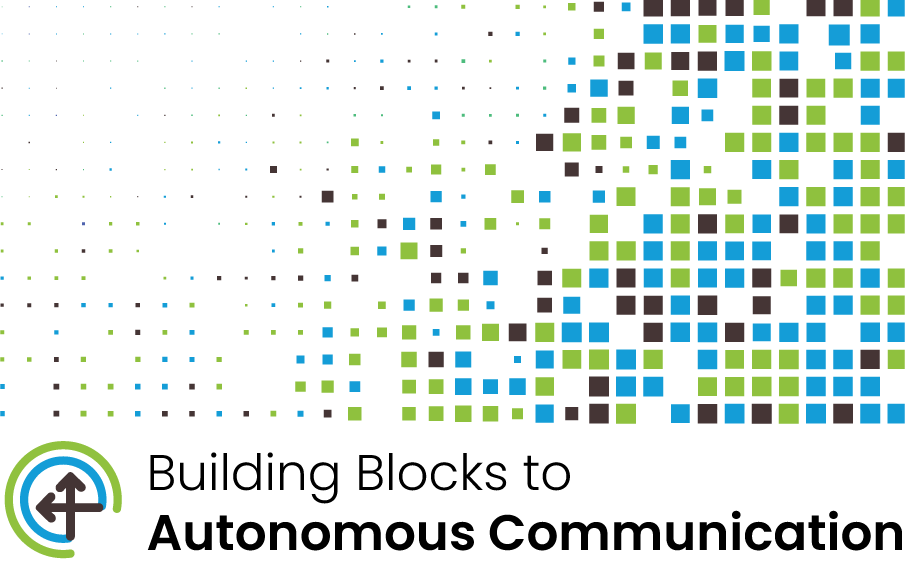Building Blocks to Autonomous Communication (BBtAC)
Communication is a prerequisite for teaching and learning. Augmentative and Alternative Communication (AAC) is a tool or support that assists a learner with communicating a message. Building Blocks to Autonomous Communication focuses on the what, why, and how of supporting learners with Complex Communication Needs (CCN). The overarching goal is that individuals with CCN leave their educational programming as autonomous communicators - in other words, that they can say what they want to say, when they want to say it, how they want to say it, and with whom they wish to communicate.
Each building block module (on EduPaths) is designed to focus on a targeted set of knowledge and skills. This knowledge and set of skills will enable educators to provide effective instruction to individuals with complex communication needs.
This course highlights how Building Blocks to Autonomous Communication was developed, the importance of joining with a team, and how to apply these skills with the complex communicators in your life.
Goal:
In this block, participants will learn about the fundamentals of Augmentative and Alternative Communication (AAC) that lead to individuals becoming autonomous communicators.
Participants will:
- Describe autonomous communication
- Debunk common AAC myths
- Explain who would benefit, what AAC is, and why it is beneficial for learners
Goal:
In this block, participants will learn the components of a multidisciplinary team approach to the Assistive Technology [AT (including AAC)] assessment process.
Participants will:
- Identify the components of the an AT and/or AAC assessment process (including consideration, selection, and implementation)
- Explain the benefits of utilizing a team based approach
- Determine the next actionable steps for improving their AT assessment process
Goal:
In this block, participants will learn strategies to support AAC users as they become more competent communicators.
Participants will:
- Describe effective practices of communication partners
- Create a plan to improve all environments for communication
Goal:
In this block, participants will learn about the importance of demonstrating language through non-electronic and electronic communicative means.
Participants will:
- Explain the differences and importance of non-electronic and electronic AAC systems
- Describe the difference between core and fringe vocabulary
- Explain the components of AARCH (a framework for thinking about and implementing AAC including Autonomy, Accessibility, Requirements, Competence, and Habits)
- Practice using low tech AAC supports (ex: core boards, PODD communication books, etc)
Goal:
In this block, participants will learn how to support AAC users with complex physical bodies as they develop language skills through alternative access (i.e., using a method other than pointing to select words, such as eye gaze, partner assisted scanning, or using a switch).
Participants will:
- Describe the differences between direct select, eye gaze, and partner assisted scanning (visual, auditory, and visual+auditory)
- Identify characteristics of individuals who may benefit from access to alternative means of communication
- Explain ten (10) key movement issues that underlie all functional movement
Goal:
In this block, participants will receive an overview of strategies that support daily, comprehensive literacy instruction for individuals with significant disabilities.
Participants will:
- Identify the behaviors and understandings of emergent versus conventional literacy learners
- Describe the instructional strategies of emergent versus conventional literacy approaches
- Reflect upon the conditions for learning in their classroom environments
Goal:
In this block, participants will gain strategies and skills for supporting AAC users beyond the classroom into their home and community environments.
Participants will:
- Explain the importance of educating all community members on how to support AAC users
- Describe strategies for partnering with families to support communication within the home and community environments
This course focuses on implementation strategies for comprehensive emergent literacy for students with significant disabilities.
This course focuses on implementation strategies for comprehensive conventional literacy for students with significant disabilities.
This course provides an overview of PODD communication books, which are robust AAC tools with a pragmatic approach. Note: the content in this course does not replace an official introductory PODD training.
This course is the culmination of the Building Blocks to Autonomous Communication pathway. Participants will gain tools and strategies to move from learning into application and implementation of the content.
